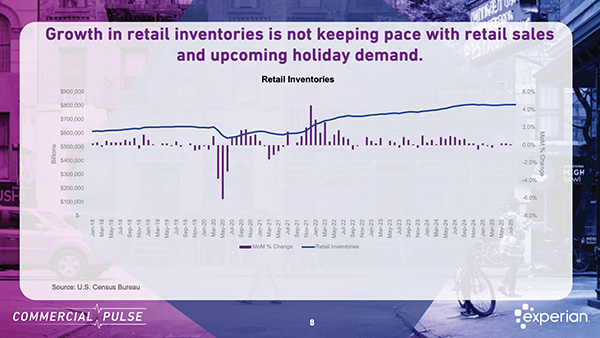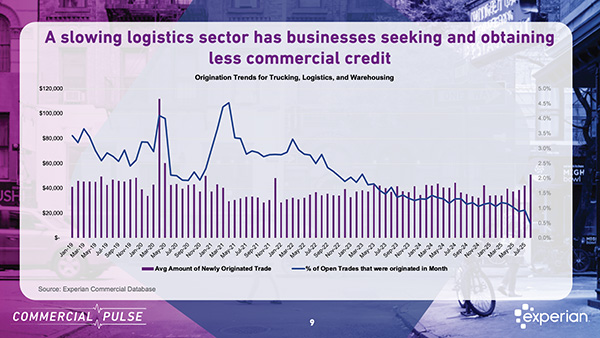As temperatures rise across the U.S., so does the nation’s appetite for travel—and the Leisure & Hospitality sector is feeling the heat. In this week’s Commercial Pulse Report, we examine how soaring consumer demand intersects with evolving credit conditions for businesses in travel, lodging, and transportation.
Travel Rebounds, But the Story Is Mixed
By every measure, Americans are traveling in droves. AAA projected over 72 million domestic travelers over the July 4th holiday—setting a record. Meanwhile, Memorial Day travel surged across all transportation types, especially road trips, which saw a 3.0% year-over-year increase.
However, despite six new TSA checkpoint records in June, major airlines have cut forward-looking forecasts, signaling a notable shift: travelers are increasingly opting for alternatives like road and rail over the skies. This change in travel behavior has direct implications for how different business subsectors access and manage credit.
Infrastructure Drives Commercial Credit Trends
The Leisure & Hospitality industry is broad and fragmented—from mega-airlines and hotel chains to small sightseeing operators and independent RV campgrounds. This diversity is reflected in commercial credit data.
Businesses with heavy infrastructure needs—like airlines and hotels—tend to carry higher loan and credit line balances. Airlines, in particular, average the highest number of commercial trades, a reflection of their large-scale operations and capital intensity.
Hotels also hold sizeable credit, but with a twist. While revenues have rebounded beyond pre-pandemic levels, occupancy rates remain flat due to an increase in room supply from new construction. The hotel pipeline stood at 6,211 projects with over 722,000 rooms as of Q3 2024, signaling sustained investment even amid margin pressures.
Rental Cars: High Volume, Higher Risk
The rental car sector stands out—but not in a good way. Despite being a key enabler of domestic travel, these businesses exhibit the highest commercial credit risk across the industry. According to Experian’s Commercial Risk Classification, 32% of rental car companies are considered Medium-High to High Risk, compared to less than 10% in categories like air transport and sightseeing.
The elevated risk may be due to a combination of factors: fleet acquisition costs, multi-location exposure, and operational disruptions during the pandemic. While credit trades in this segment remain high, inquiries have declined over recent years, possibly reflecting tightening lending standards or constrained demand for new credit.
Encouraging Risk Trends—With Exceptions
Across the broader Leisure & Hospitality industry, there’s been a decline in commercial credit risk since 2020. The share of businesses classified as Medium-High or High Risk dropped from 11.7% to 8.5% as of April 2025. Most firms now fall into the Medium Risk category—a sign of normalization in the sector.
Delinquency rates remain low (under 1%), and the average Intelliscore Plus v2 score has remained stable across most subsectors. Still, credit conditions vary sharply by business type, underlining the importance of nuanced risk assessment in portfolio management.
Smarter Credit Allocation Starts with Subsector-Level Insight
The summer travel surge is a powerful reminder of the sector’s resilience—but not all players are experiencing the boom equally. For credit professionals and commercial lenders, the latest data from Experian suggests a growing divide: infrastructure-heavy firms are leaning into credit, while high-risk subsectors like rental cars may warrant closer scrutiny.
Whether your clients are in air transport or roadside accommodations, understanding these credit trends will be key to navigating the second half of 2025.
- ✔ Visit our Commercial Insights Hub for in-depth reports and expert analysis.
- ✔ Subscribe to our YouTube channel for regular updates on small business trends.
- ✔ Connect with your Experian account team to explore how data-driven insights can help your business grow.



